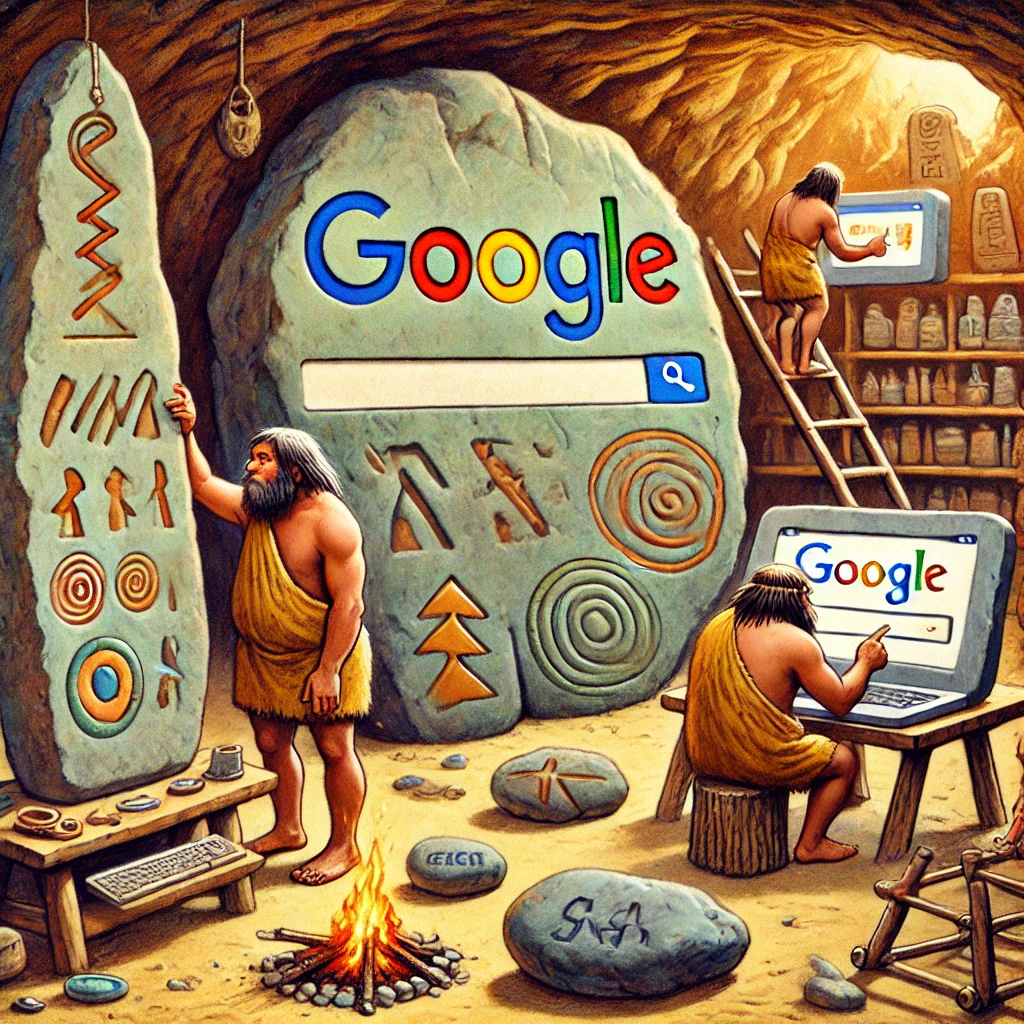In a revelation that has both anthropologists and tech enthusiasts buzzing, a team of archaeologists has unearthed evidence suggesting that prehistoric humans may have invented Google-like practices thousands of years ago. The discovery, made in a remote cave in modern-day Turkey, includes a series of rhythmic carvings, primitive reference tools, and detailed pictographs depicting what can only be described as early search results.
Dr. Lila Loop, lead archaeologist on the project, explained the significance of the find. “What we’ve uncovered here are clear indications that our ancient ancestors engaged in highly organized information-sharing systems. The pictographs show groups of humans indexing objects, drawing maps, and creating symbols—essentially, the original ‘search engine.’”
The cave, dubbed “Searcher’s Cradle” by the research team, also contained early indexing devices of sorts—flat stones covered in reflective resin that might have been used to organize and retrieve information. “We believe these were proto-indexes,” said Dr. Loop. “Participants would categorize their knowledge and ensure it was easily accessible for others to query, or what we’re calling the ‘tribal database.’”
What’s more, the researchers found evidence that prehistoric humans were using tags. Etched symbols near the carvings appear to categorize the entries: a spiral for “#tools,” a zigzag for “#maps,” and an arrow pointing upward for “#knowledge.”
Interestingly, this find ties closely to another recent discovery in Egypt, where researchers decoded an ancient hieroglyphic tablet believed to be an early WiFi network. The tablet, known as the “Pharaoh’s Signal Booster,” contained symbols that appeared to represent signal towers and devices linking communities across the Nile. Experts speculate that while the prehistoric Google indexed knowledge locally, the Egyptian network may have been the world’s first attempt at global connectivity—albeit limited to the pharaoh’s elite circle.
The implications of these discoveries are enormous. “It’s clear that the desire to search, organize, and share information is deeply embedded in human DNA,” said Dr. Loop. “These were the first data curators, and their platform was the world around them.”
Critics of the study argue that the carvings might simply depict rituals or storytelling practices. However, Dr. Loop and her team are confident in their interpretation. “The sheer organization of symbols and the detailed annotations make it clear that this wasn’t just storytelling. This was a structured system designed for mass knowledge sharing… well, as massive as a prehistoric audience could get.”
Modern Google users have embraced the findings with enthusiasm. “It’s so cool to think we’re carrying on this ancient tradition,” said one tech enthusiast. “I’m totally adding ‘prehistoric vibes’ to my next search query.”
Meanwhile, brands are already cashing in. A major tech company has announced plans to release a line of “Cave Tabs,” inspired by the rudimentary tools found at the site, and a search engine app is reportedly testing a “stone-carving” interface.
As the story of humanity’s first search engine goes viral itself, experts remind us to reflect on the deeper message. “It’s a reminder that, while platforms and tools change, the human desire to connect, organize, and leave a legacy remains timeless,” said Dr. Loop. And who knows? The next time you’re typing into Google, you might just be channeling the spirit of your ancient ancestors.
